|
It's hard to believe that only seventeen days have come and gone through the free agency period. July feels like a busy time of year because, well, it is. Free agency signings come furiously through the news wires, Summer League is a cluster of multiple young players and games that come and go, and trades as well as the ramification from the draft are still fluid situations. There's a lot going on...
We're here to help... Today we're looking at the winners and losers of the summer thus far, starting after the draft and leading into today. Now that we've seen how draft picks have performed (albeit in a small sample size), free agency's muddle is starting to clear up and we finally have some clarity on the Kawhi Leonard situation, here's how we'd grade the last month for each team:
0 Comments
LeBron James agrees to join the Los Angeles Lakers. He will sign for four years and $154 million, with an Early Termination Option in year four. Wow. It's one thing to hear that it's coming, it's another to actually see it happen. LeBron is leaving Cleveland... again. That in itself changes notions and preconceptions about his legacy, fair or unfair. We live in an instant-gratification society, with information and entertainment at our fingertips. We learn and process information faster. News gets pushed through the news cycle at rapid pace, a product of both our complicated modern world and our ability to process quickly while demanding more content instantly. The bi-product of that is simple: loyalty is harder to come by, with a complex world diluting an already complex emotion. Our complex and fast-moving world blurs the lines of loyalty, our polarizing and politicized climate can erase those lines, our morality too frequently tested to defend in every way. Perhaps a departure from Cleveland for LeBron James, as foreseen as it may have been, is only jarring because we foolishly still expect sports to be immune from all these pressures. No longer can we hold that expectation. For the second time in his career, LeBron James is leaving home. What he's running from or towards we do not know. The four years in Miami, and his most recent four in Cleveland, seem much longer, filled with polarizing moments, incredible roster turnover and so much mainstream attention that it's impossible not to fatigue from LeBronmania. Loyalty from teams towards players disappeared under the guise of "business decisions", and that same rationale has evaporated the sentiment from the players as well. Pushing aside the questions of his legacy, the image changes and what this means for LeBron's swerve for his career, there is some basketball to analyze here. We don't really know much about how the Lakers will look, how they'll navigate these changes and what exactly they'll do to surround LeBron with players he likes. The Western Conference is absolutely loaded right now. The Lakers also agree to one-year contracts with Lance Stephenson ($4.4 million), JaVale McGee ($2.4 million) and Kentavious Caldwell-Pope ($12 million). Not the start any of us expected the Lakers to take with surrounding LeBron. Part of the reason it feels almost surreal that he's in Los Angeles: the moves that the organization have made in the wake of the quietly-announced signing are rather strange. Lance Stephenson, a long-time rival of LeBron's for his antics moreso than his abilities, joins the fray for the Room Exception. That amount, $4.4 million, is a lot for a player that is incredibly inconsistent offensively and had the lowest on-ball defensive ratings in the NBA last season. JaVale McGee at the minimum is a great signing and allows the Lakers to get someone that could slide into either a starting or a backup center role for cheap. While that's a great signing, it is surprising to see the Lakers not want to surround LeBron with a stretch-five. Non-shooters like Stephenson, Lonzo Ball (he's not a great catch-and-shoot threat) will cramp the floor, and McGee, for as quality a signing as he is, doesn't alleviate those concerns. Caldwell-Pope is a solid fit on the court and is one of those guys that was once so overrated that now he's underrated. Still, twelve million a year is a large chunk of the non-Bird cap room the Lakers have to flank LeBron with big-name guys. It feels like they could've chased bigger names with this budget and the appeal that playing with King James and in Los Angeles would have. Instead of trying to leverage that to their advantage, they punted and kept KCP. The elephant in the room is Kawhi Leonard, and with space running out, the Lakers cannot wait forever to acquire him. We'll see if they can pull the trigger and get him to his desired location. It will be bizarre to watch two players that were once destined to be rivals due to their matchups in the NBA Finals team up in Los Angeles. The San Antonio Spurs agree to two deals. Rudy Gay will stay for one-year for $10 million, and G Marco Belinelli returns to the Spurs on a two-year, $12 million deal. The Spurs keep Spurring, moving forward with business as usual despite the constant pressures to trade Kawhi Leonard. Gay signs into their cap space, while Belinelli will join on the Mid-Level Exception. These signings should signal San Antonio's lack of desire to waive the white flag and surrender if Kawhi moves on. This isn't a team planning a rebuild. Belinelli provides great spacing for the Spurs and Gay is that switchy combo wing they crave. The more roster spots and agreements they make before trading Kawhi, the more strange this will become and the more difficult it will be for RC Buford to navigate. I still like that move, but they have to be careful. PG Fred VanVleet re-ups with the Toronto Raptors for two-years at $18 million As the Wichita State product said on his Twitter account, "bet on yourself." VanVleet is a Sixth Man of the Year candidate and was fantastic for the Raptors bench last year. We'll see how he does under Nick Nurse, but he's a talented player the Raptors can grab above the cap due to maintaining his Arenas rights. The Raptors are in a tough spot though, with $135 million in player salaries. The path is cleared to the NBA Finals now that LeBron is gone, but this is a high payroll for a team that historically hasn't desired to be in luxury tax. They're $5.4 million above the tax threshold and have 13 players under contract. This is going to be an expensive year for a team that is probably up there with Philadelphia and Boston vying for the NBA Finals. The VanVleet signing is a necessity and gives them a great insurance policy to Kyle Lowry. Not sold on him as a starter, so this is the perfect role for him. Aaron Gordon re-ups with Orlando for four-years and $84 million Gordon signed a lucrative deal with what is likely the only team to bid heavily on his services. Seeing that large of a number, I wonder who the Magic were bidding against. If they just artificially put this pricetag on Gordon without firm interest elsewhere, that's not ideal. Orlando has severe spacing issues, and Gordon doesn't help alleviate them. It appears they want to load up on wings and experiment with size and length everywhere, which is an idea in theory I don't hate. Still, they need shooting if they're going to execute it on offense. Gordon is a player they couldn't afford to let walk away. I still believe in him and his upside. Now Orlando has twelve firm roster spots taken up, and with Gordon being a restricted free agent they can use some of the $15 million in cap space they possessed entering free agency elsewhere. They'll be careful not to utilize all of it, as doing that and adding $18.5 million of Gordon's first-season salary under the new contract would vault them right to the luxury tax. Expect Orlando to use about $10-12 million of that space on either absorbing poor contracts or chasing a point guard that fits their mold. Rapid fire mode here with some smaller moves that took place...
Mario Hezonja to the New York Knicks on a one-year, $6.5 million deal - Hezonja's agent deserves a raise. This is the perfect landing spot, both in terms of opportunity and style. Hezonja can score, and the Knicks lack it, especially on the wings. It's a one-year deal at the MLE, but it's a great value for both sides. Glenn Robinson to the Detroit Pistons. Two year-deal with the second year as a team option; Robinson will make $4.05 million in year one - Good grab for the Pistons. A talented wing that's forgotten a bit, Robinson adds high-upside depth on the wings. Kudos to them for getting him with a cheap team option for year two. Detroit is now $8.4 mill from the luxury tax and $14.4 from the tax apron, giving them plenty of flexibility with their remaining MLE (can use up to $4.8 million). Good start for the bargain-bin shopping Pistons. Omri Casspi to the Memphis Grizzlies on a one-year Veteran's Minimum Deal - Always like Casspi getting the minimum, and he'll be a great stretch 4 and switchable wing for the Grizzlies. They now have 14 players under contract, the MLE and some non-guaranteed contracts they can wiggle out of. Grizzlies might not be done. Salah Mejri stays with Dallas on a one-year Veteran's Minimum Deal - Great work here for Dallas to keep him despite their non-qualifying him with a qualifying offer. He played with Doncic before and is a good third big due to his size and solid productivity. Brooklyn signs G Joe Harris to a two-year, $16 million deal, and C Ed Davis to a one-year, $4.4 million deal. Great initial movements from the Nets here, agreeing with two of their targets that won't hamstring much money from 2019 while maintaining all of their cap space flexibility for this summer. How would that work? The structures of the deals and how they would absorb them. Brooklyn might have, entering free agency, around $8 million in room with ten players on the roster. Davis and Harris, who add about $12 million in salaries, would make that about twelve players. But Brooklyn can still maintain that $31 million number in terms of salary absorption through trades, for any teams that still need to unload expiring deals. Because the Nets have the Bird rights to Harris, they can wait to officially sign him until they're over the cap. Davis, agreeing to a deal below the $4.54 million of the Room MLE, could theoretically wait to put pen to paper until they're over the cap - or within $4.4 million of it - as well. What does that mean for the Nets? It means they maintain about $8 million in space to absorb other contracts, then go about signing Davis and Harris. It won't be enough to bail out a team that needs major financial flexibility, but could help the Nets get an extra asset for taking on the likes of Darrell Arthur from Denver ($7.46m expiring), Alexis Ajinca from New Orleans ($5.28m expiring), or Wesley Johnson ($6.13m expiring) from the Los Angeles Clippers. Brooklyn would then waive said player and take back a conditional draft pick and some cash for their troubles. But on its face, Brooklyn gets exactly what they need. Harris provides important floor spacing for a three-point trigger-happy team, and a coach that loves to utilize Harris off multiple screens. Davis is a highly-touted veteran that has never reached his desired ceiling, and playing as an exclusive 5-man, with a dash of good health, could give the Nets a steal. The Boston Celtics retain C Aron Baynes with a reported two-year, $10.6 million deal. The second year will be a player option. Such an easy negotiation took place between two sides that really wanted to stay together, so Baynes stays in Boston. The cap mechanics are really important here, though. Because Boston had non-Bird rights for Baynes, this was the maximum they could add. For taking the discount Boston needed, the Celts rewarded him with the second-year player option. Now the Celtics will still maintain full usage of their MLE this summer if they want it. What an unselfish move on Baynes' part. The Celtics now have $115 million in salaries against the cap and only Marcus Smart still to negotiate with. Without Smart, they'll stay clear of the luxury tax ($14.6 million from the apron), and are almost the full MLE from the tax line ($8.63 away, full MLE is $8.8m). They now have an important path to replacing Smart if he leaves, but more likely would forfeit that MLE money if they got Smart. He would bring their roster size to fifteen. Now the Celtics stand at 14 players and are in a good position to do whatever they please the rest of the summer. They can match for Smart and go into the tax (although him getting $14 million a year is highly unlikely), they can make moves for Kawhi, they can use the MLE if both fall through. Boston is in great shape. Danny Ainge is a genius. PG Derrick Rose and the Minnesota Timberwolves agree to a one-year veteran minimum deal
It seemed like a foregone conclusion that Rose would re-up with the Wolves and his former boss Thibodeau. He showed a propensity to put the ball in the basket, although in rather inefficient ways. To get that production on a minimum deal is solid, no matter your thoughts on Rose's defense and floor spacing. Yet it's striking that the Wolves prioritize getting Rose, a non-floor spacing guard, over a restricted free agent like Bjelicia or a shooter somewhere. The Wolves are at $110.2 million in salaries and only $10 million from the luxury tax, and $16 million from the tax apron. That apron is the line they don't want to cross. With ten players under contract and only $16 million to go, the team's usage of the Mid-Level Exceptions will be dependent on how they negotiate with RFA Nemanja Bjelicia. Rose is a solid signing that I don't hate for his contract or with this team. But they need outside shooting badly, and with this budget remaining it's tough. Rose doesn't hurt that budget, but he doesn't help the outside shooting. G Nik Stauskas and the Portland TrailBlazers agree on a one-year pact worth the minimum Now signings like this are why I question the Wolves prioritization of talking to Rose when they could've had similar dialogue with a player like Stauskas. This is, in basketball terms, the right marriage between skill set, team need and offensive and defensive systems. Stauskas is a shooter that plays well on the move. He's not a ball handler, struggles to guard quicker guards and is a tad undersized for the 3. In Portland he'll play the 3 but be flanked by a drop-back scheme that almost encourages him to get beat and is predicated on help. He'll also run off a ton of screens and be of value alongside ball-dominant guards like Damian Lillard and CJ McCollum. The value is great for the Blazers, who are up against their backs when it comes to finances. The team's questionable decisions to renounce the cap holds of Shabazz Napier and Pat Connaughton still leave many to scratch their head, but this is a good one-year, low-risk signing on their part. Twelve players are under contract, with $1.7 million between them and the luxury tax and $7.7 million before the tax apron. Portland will likely have to head into luxury tax territory to re-sign Jusuf Nurkic though, and because of that their Mid-Level Exception spending power is weakened. Now might be the time for the Blazers to vault into the territory, keep Nurkic, and then use the $5.45 million Taxpayer Mid-Level Exception to add another player. The key to this strategy was getting good, high-quality players on the minimum. Stauskas is a step in the right direction there. Now expect GM Neil Olshey to close in on some MLE targets. Miami agrees with F Derrick Jones Jr. on a two-year, $3.15 million deal, which is essentially a two-year minimum. Not every contract is exactly what it seems on the surface. This is a one-year contract for a versatile athletic forward the Heat didn't want to lose. That second year is fully non-guaranteed, which makes it like a one-year deal where the team can pick it up if they want. It's a small move, but a meaningful one that adds talent without much fanfare or finance. The Heat are now with eleven players on the roster, standing just over $7 million beneath the luxury tax apron, which they desperately will want to avoid. Three guys on the minimum (Wade, Babbitt and Haslem, if they desire), would leave about $3 million left for a Taxpayer MLE. Or, Wade on a minimum and two undrafted rookie signings would create about $4.3 million in space. This is where the Heat not being able to get into the second-round really hurts. They could use some of those low-value deals in order to circumvent the tax apron and still use the taxpayer MLE to its strongest degree. F Kevin Durant agrees to re-up with the Golden State Warriors. The contract is for two years, with the second year as a player option. Not much surprise from Durant here, who takes a slight discount rate once again to help out the team, gets the one-and-one deal to maintain his flexibility and allow him to earn more in the future when the cap rises, the max contract available follows suit and the Warriors will repay that good will by paying Durant that big salary. Golden State is saddled with tax payments, but if the reports of them bringing in a crisp $130 million from just their home playoff games is true, then luxury tax payments aren't much of a concern so long as they keep winning. Durant is someone we knew would come back, and this deal is agreed upon early. No surprise. The Warriors are now at $134.5 million in salaries with ten players accounted for. They'll likely continue with free agency by shopping for veteran minimum players, their Mid-Level Exception and perhaps retaining restricted free agent Patrick McCaw, whose negotiations should draw out deeper into the process. PG Chris Paul agrees to a four-year max contract with the Houston Rockets worth $159.7 million. Paul's contract should break down with annual salaries of $35.7 million, $38.5 million, $41.4 million and $44.2 million, paying him until he's 37 years old and through June 2022. CP3 got that one last payday he wanted and negotiated as a possibility into the collective bargaining agreement during the latest CBA negotiations. Little surprise here either, as the Rockets were within minutes of making the NBA Finals with Paul, Harden and Capela as their core. Of course, now the Rockets must cut the checks. New owner Tillman Fertilla has a lot of checks to sign: over the next few years, here are the combined salaries of Paul and Harden –– not counting a potential rich extension for big man Clint Capela: 2018-19: $66.1 million 2019-20: $76.4 million 2020-21: $82.2 million 2021-22: $88.1 million Should Capela sign a deal north of $18 million, the Rockets will be paying more than $100 million for three players starting in 2020. Long-term, there are tax and cap ramifications the Rockets will certainly have to tackle, but nobody will think twice about whether that is worthwhile, given how close the team was to toppling the Warriors. Business as expected here. Houston also retains G/F Gerald Green on a one-year veteran's minimum deal for $2.4 million Because of Green's veteran status, he'll make $2.4 million but only $1.5 million of that counts against Houston's cap. The Rockets will also have Early Bird rights on Green for next summer, and Green gets a trade restriction clause in his contract signing the minimum again with the same team that doesn't hold his Bird rights. Houston, after paying so much for their top end guys (and losing a starter to free agency, which we'll hit on later) getting Green locked in early was crucial. Look for the Rockets to try and do the same with Mbah a Moute within the early days of free agency. Houston now sits at $117 million in player salaries and will have to negotiate with Clint Capela. If he's re-signed and the Rockets get a second-round pick in De'Anthony Melton to take a deal, that will be twelve players on the roster, with guys like Mbah a Moute and Joe Johnson still able to negotiate towards minimum deals, and the Taxpayer MLE at their disposal to replace Trevor Ariza. Houston is looking to be north of $140 million on player salaries next year. The Oklahoma City Thunder retain G/F Paul George with a four-year, $137 million max contract that includes a fourth-year player option. Speaking of teams with high payrolls, the Oklahoma City Thunder could shatter records next year when it comes to player salaries. George is the easiest decision to make though, as the Thunder will retain him, pay the core of George-Westbrook-Adams an absurd amount of money, and ride out the remainder of the Carmelo Anthony deal. For the Thunder, this is a huge coup to get George to commit on the eve of free agency and without taking a meeting from another team. The Thunder needed to keep George around if they planned on competing, and we still could have a really good team with that core of three, a healthy Andre Roberson and a versatile Jerami Grant. The Thunder have been on a delicate track for years now, and getting PG-13 to stay is important for them, despite the tax payments that flow thereof. F Jerami Grant has agreed to a three-year, $27 million deal to stay with the Thunder Joining George in quickly re-upping with the Thunder is Jerami Grant, and this is another big win for OKC from a competitive standpoint. Grant is young, versatile, strong on defense and likely to end up their cheapest starter moving forward. Now the Thunder have a starting five all signed for the next three years: Westbrook, George, Roberson, Grant and Steven Adams. What a defensive group. Let's step aside from the on-court ramifications though. Here's the deal with Oklahoma City: they're at $155.7 million in player salaries for next season already, with only eleven players under contract. Based on their tax bills, they'll have about $130 million in tax payments next season, bringing the total up to about $288 million in monies doled out by owner Clayton Mortensen next season. There's a way to significantly cut into that: stretching the contract of Carmelo Anthony. By spreading that value out amongst three years (2x + 1 is the formula for determining how long the remaining money of a contract can be spread across), the Thunder would have three years of about $9.3 million on their books for Melo. Next season, that saves them about $100 million total, reducing their salary down to $137.5 and cutting their tax bill down significantly. It's not a slam dunk that this will happen for the Thunder, though. Spreading that $9.3 million across would add their 2019-20 and 2020-21 salary situations up to $140 and $127 million already, keeping them in luxury tax territory. It's much easier to imagine the Thunder ducking the luxury tax next year if Melo is completely off the books. Essentially this is a long-term decision for Oklahoma City to come to based on what they project and budget themselves to spend. It seems like the best course of action though would be to stretch Melo. Keep tabs on the Thunder with how they fill out their roster. It will be filled with likely cost-cutting measures and G-League or Summer League guys, as well as maybe one or two veterans. The Denver Nuggets agree to a five year, $147.7 million contract with RFA Nikola Jokic Another expected result, although we're still waiting to see just how the final year plays out of this deal: will it include a player option, a flat five-year deal or a partial guarantee that protects both parties in the event they want a separation. The thought is that, by not exercising their team option for 2018-19 on Jokic, the Nuggets bought enough good will with him and his agent to get something more team-friendly that a fifth-year player option. Still, it's shocking to see the numbers finally land on Denver's cap sheet with their player salaries. The Nuggets are up to $140.3 million in salaries, counting the hold of first-round pick Michael Porter Jr., with only two roster spots remaining. Locking up Jokic was incredibly important, as he's their franchise player that they have built everything around. Keeping a strong relationship is paramount here. Denver wasn't done on the first night of free agency... The Nuggets also re-signed G Will Barton to a four-year, $54 million deal Big money for Barton, and the Nuggets coughing up quite a bit to keep him. I'm honestly surprised, and the deal brings the Nuggets up to around $151 million in salaries for next year. However, that number is all but certain to come down. Denver will repackage some young players or future picks to push the expiring contracts of Kenneth Faried ($13.76 million), Wilson Chandler ($12.8 million) or Darell Arthur ($7.5 million) onto teams with cap space. The Nuggets could fall about $20 million in salaries by getting rid of two of those three without taking anything else back, as unlikely as that is. Either way, the long-term spending habits for the Nuggets will eliminate them from future free agencies and dictate a need to start winning now. They're up to $122 million for next season, missing out on the large 2019 free agent crop. They'll still have to replace the productivity of Chandler and Faried in that scenario as well, with draft picks potentially being gone due to the need to immediately dump salary. Keep your eye on how GM Tim Connelly jumps around the tax here. I expect Denver to be above the luxury tax next year (and undoubtedly hard-capped), but to be a big time player on the trade market, hopefully sooner rather than later. They'll undoubtedly call teams like Brooklyn, Sacramento, Atlanta and Chicago early and often. F Trevor Ariza agrees to a one-year, $15 million contract with the Phoenix Suns
We expected to see Ariza chase the money this summer and get one last payday, and it only made sense that it would end up as a one-year deal. With the expected cap spike next year, Ariza didn't project to be a valuable enough target to cut into any team's cap space. What is surprising, however, is Phoenix quickly removing themselves from anywhere else on free agency by pledging a high $15 million total on Ariza. On the court, Ariza is the perfect stretch versatile forward for the Suns. He'll allow them to play multiple players on the wings and instantly becomes their starter at the 4 in what is finally a more up-tempo friendly team. What that means for guys like Marquese Chriss remains to be seen, but likely slides him to a low-end reserve role. The Suns have a glut of versatile, long wings: Ariza, TJ Warren, Josh Jackson, Jared Dudley – Ariza and Jackson should be the starters of that group. Here's how the structures work for the Suns with the signing. If they renounce the rights to Elfrid Payton and Alex Len, which seems likely to happen anyway, the Suns would have $12.5 million in room off 14 roster spots. Ariza would make the fifteenth, but in order to create the extra room necessary for him to sign that $15 million deal, the Suns will have to request waivers on Alan Williams, whose $5.52 million contract has no guarantees until July 6th. Now that Ariza is in safe and has agreed, expect the Suns to waive Williams, then sign Ariza, and still have about $3 million under the cap, with which they'll sign 31st pick in the draft Elie Okobo. Phoenix must find themselves still in the veteran point guard chase, and seem to be relying on the trade market here. Their expiring contracts of Tyson Chandler and Jared Dudley have value here. Perhaps the Suns try to angle for a veteran stop-gap point guard like Jeremy Lin or Jeff Teague. Overall this is a good first step for the Suns to get more competitive next season. They still plan to have about $56 million in space next summer (half of which will likely go to Devin Booker) and will avoid the luxury tax safely this year while also having the non-guaranteed contract of Shaquille Harrison to waive if they want to use their Mid-Level Exception. The Milwaukee Bucks agree with F/C Ersan Ilyasova on a three-year, $21 million deal This one was really interesting, and in a positive way for the Bucks. Ilyasova is the perfect stretch-5 in Milwaukee for a team that badly needed outside shooting, knows and understands how to play for Coach Budenholzer and will have his rim protection disabilities covered by a team filled with length and athleticism. Three years is a bit steep, but the overall price tag for a role player like this is solid. Ilyasova was the saving grace for Philadelphia in their first-round series against the Miami Heat and should have a ton of value within Milwaukee's versatile lineup. Ilyasova signed with the Bucks using the vast majority of their non-taxpayer Mid-Level Exception. By using more than the $5.45 million Taxpayer MLE for his annual salary, the Bucks are now hard-capped, meaning they cannot exceed the luxury tax apron line, which is set at $129.7 million. With $112 million in salaries currently, they're about $17.5 million shy of that level, giving them plenty of room to maneuver with re-signing Jabari Parker. Parker would make the fifteenth player on the roster, too, so the Bucks are set. They could also get an additional $3.5 million in tax relief if Mirza Teletovic's dead cap hit is taken off due to the NBA wiping it away due to his inability to be medically cleared. Milwaukee is in solid shape financially here thanks to their cap management, but the Parker contract looms large. Should he bolt for another place, they lack the assets to replace him now that their Mid-Level Exception is dried up and they cannot use the Bi-Annual due to hard cap rules. Their best tools remaining: the $2.16 million remaining of the MLE and a $3.38 million trade exception from Greg Monroe, which expires in November. Smaller moves can be made by the Bucks, but they're basically done with their summer once they get a commitment from Parker. F Doug McDermott agrees to a three-year, $22 million deal with the Indiana Pacers Not as much of a fan of this one, to be honest. McDermott is making more than Ilyasova, and I'm not convinced he'll have close to the same impact. The Pacers wanted more shooting and now have a mobile 3 or 4-man in McDermott. There are plenty of believers in his around the league that wanted to see how he'd perform in a more tenable situation, but I'm really surprised to see him secure both a long-term deal and this much money. Perhaps the Pacers see something that I don't with him as a backup 4. The way the Pacers structure this will be super fascinating. McDermott's deal can easily count against the Non-Taxpayer MLE, allowing them to wait to officially sign the contract until they utilize the full $12.8 million of their cap space (which could jump up to $20.5 million if they released some non-guaranteed contracts). Do the Pacers try to make a splash for one other restricted free agent they think they can snatch away? I still think they'll end up trading away the contract of Al Jefferson to a team that needs financial help, but likely will hang onto that as long as they can, see cap space around the league dry up and then leverage themselves as a last resort money-saver and drive up the price. With that being the case, I don't know if the Pacers will get an impactful restricted free agent with their $12.8 million that cannot be bid on elsewhere. Of course, the Pacers could also sign McDermott into cap space, have roughly $5.7 more that allows them flexibility to absorb other deals, and then wait to pledge the full $8.9 million Non-Tax MLE to a higher-impact player. Both are legitimate options, and that's why the McDermott agreement isn't too bad: they still have to many options with how to structure their summer. |
Adam SpinellaHead Boys Basketball Coach, Boys' Latin School (MD). Archives
September 2021
Categories |
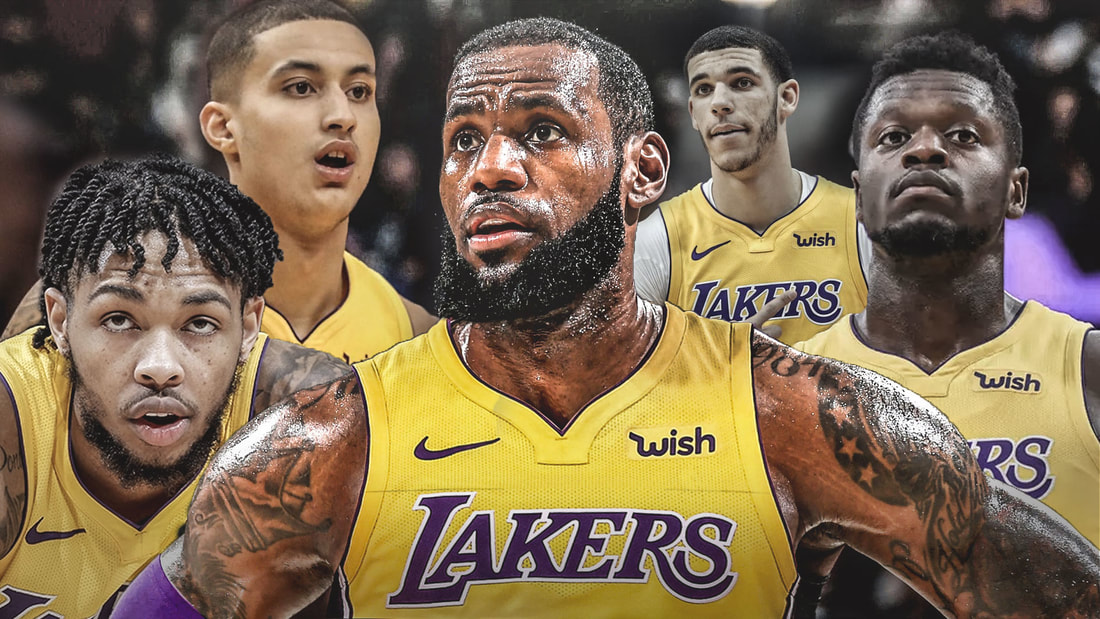
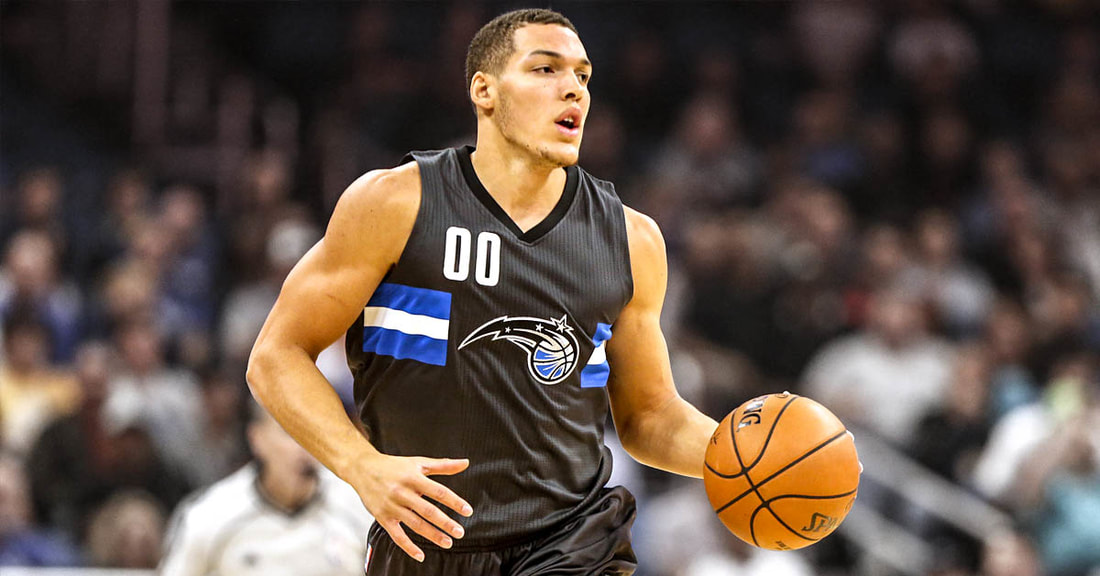
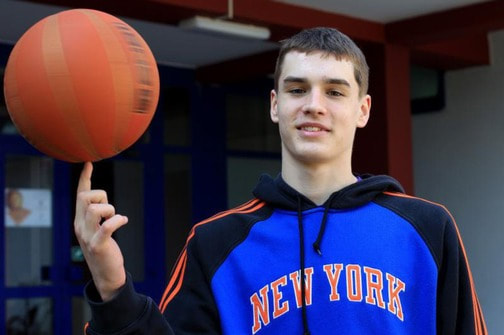
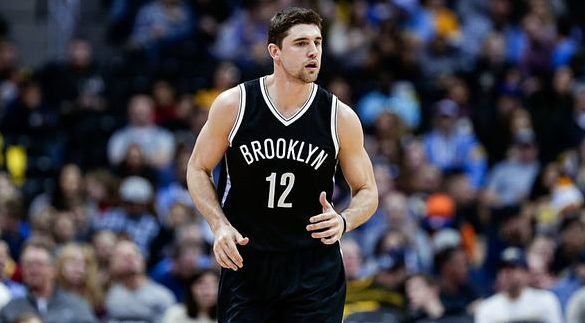
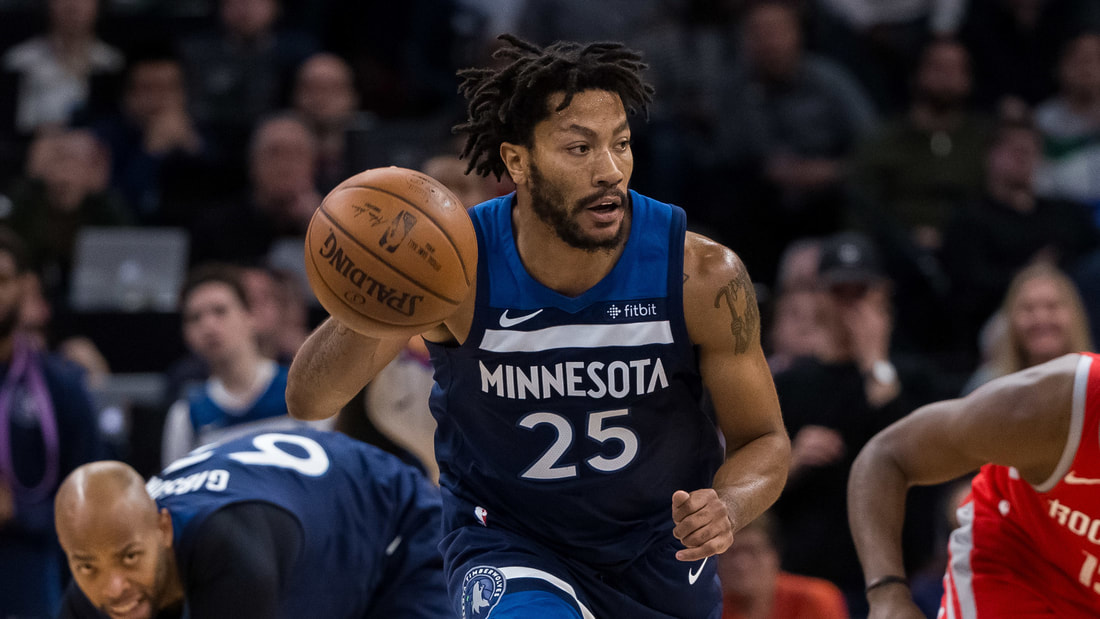
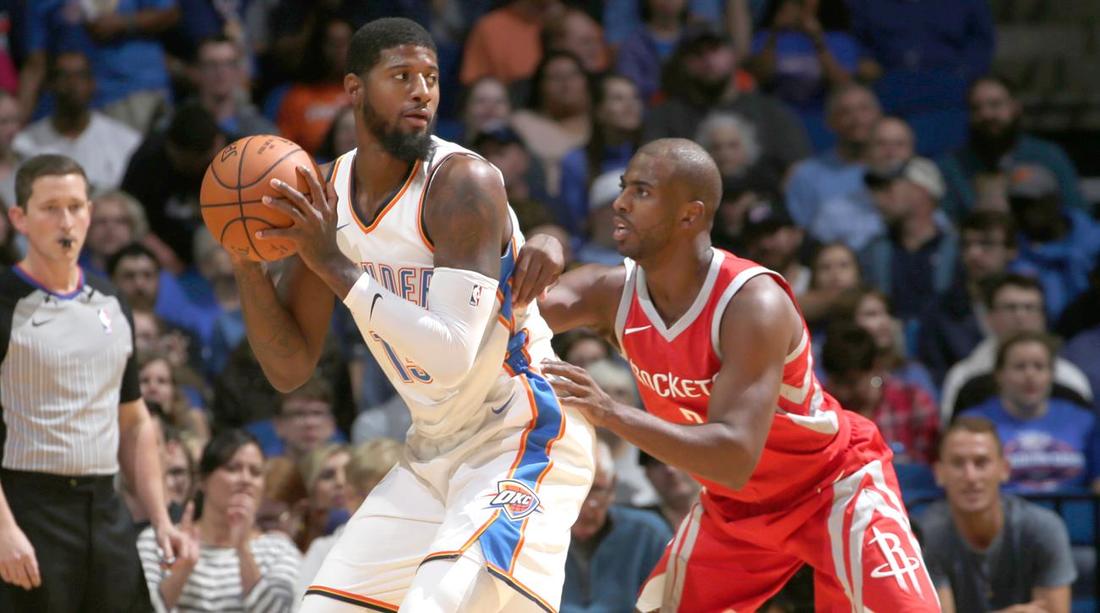
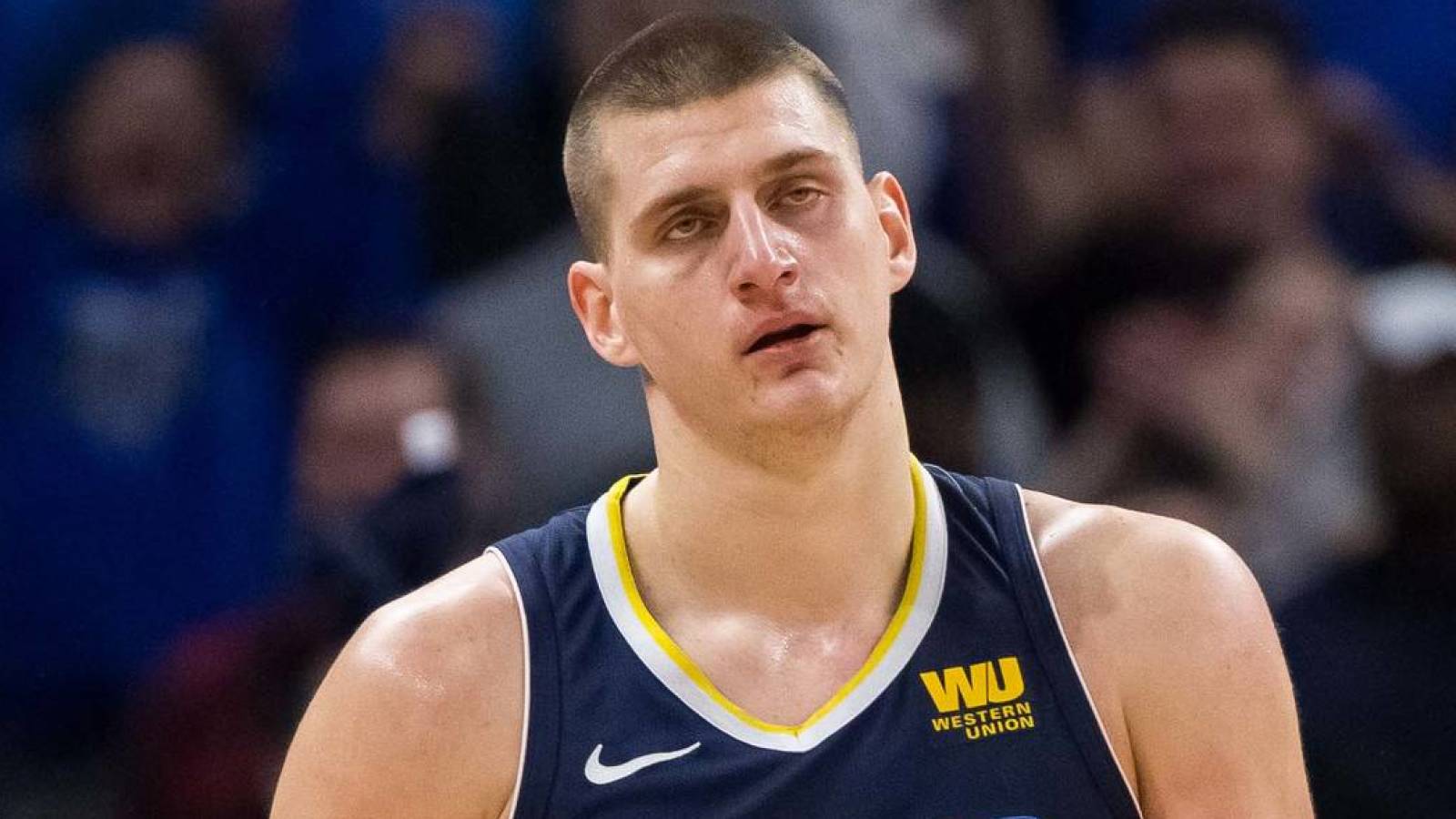
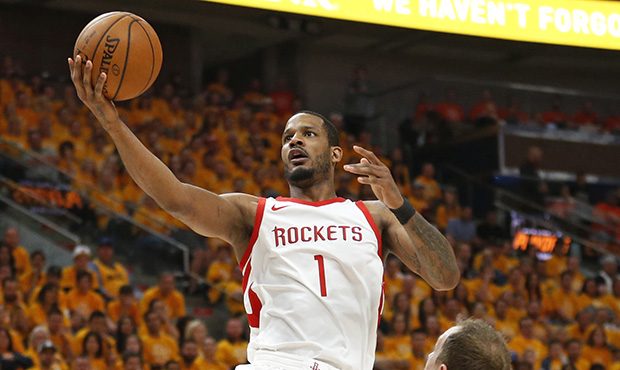
 RSS Feed
RSS Feed
